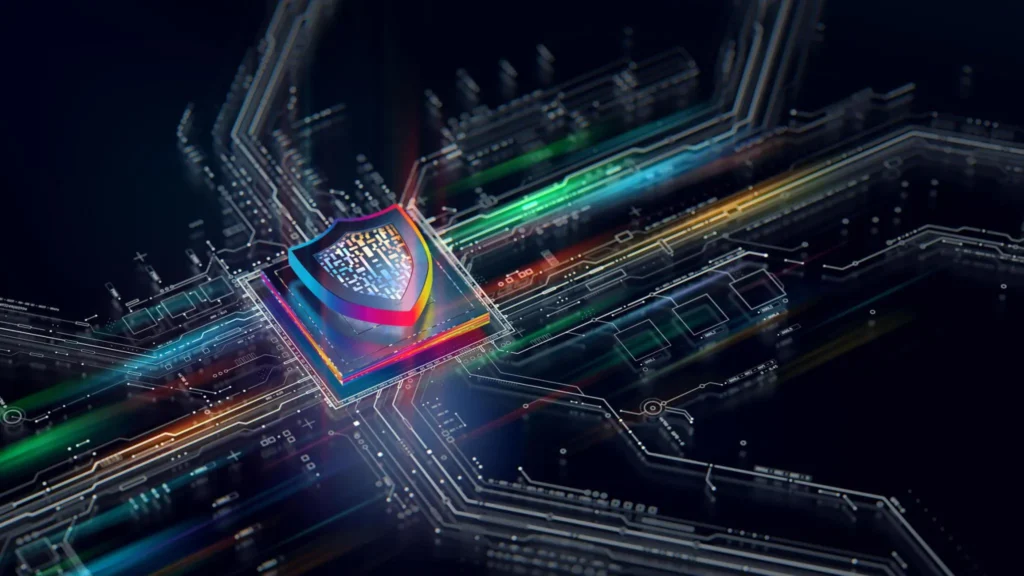AI vs. Humans in Cybersecurity: A Symbiotic Partnership, Not a Solo Act

The ever-evolving landscape of cybersecurity throws increasingly complex challenges our way. As adversaries leverage sophisticated tactics, the need for robust defense mechanisms grows ever more critical. In this high-stakes arena, a compelling question arises: who reigns supreme in the battle for digital security – AI or humans?
The Rise of the Machines: AI’s Superhuman Strengths
Artificial intelligence (AI) has emerged as a powerful force in cybersecurity, wielding unique strengths that leave humans in the dust:
- Pattern Recognition Prowess: AI excels at analyzing vast amounts of data, identifying intricate patterns and anomalies that might escape even the most eagle-eyed human analyst. This allows for proactive threat detection and prevention, mitigating risks before they escalate.
- Lightning-Fast Analysis: Machines operate at speeds far exceeding human capabilities. AI algorithms can sift through millions of events per second, enabling real-time threat detection and rapid response, crucial in the fast-paced world of cyberattacks.
- Scalability and Endurance: Unlike humans who tire after extended periods, AI systems operate tirelessly, monitoring networks 24/7 without breaks. This ensures constant vigilance and minimizes the risk of lapses in security.
The Human Edge: Beyond the Algorithmic Realm
However, despite AI’s impressive capabilities, humans remain irreplaceable in the cybersecurity realm. They bring invaluable strengths that AI simply cannot replicate:
- Critical Thinking and Decision-Making: AI excels at following predefined rules, but it struggles with situations requiring nuanced judgment and critical thinking. Humans can analyze complex scenarios, weigh various factors, and make informed decisions in the face of uncertainty.
- Intuition and Creativity: Human intuition, honed through experience and expertise, can sometimes identify threats that AI might miss. This “gut feeling” can be invaluable in uncovering novel attack vectors and devising creative countermeasures.
- Ethical Considerations and Social Impact: Cybersecurity decisions often have ethical implications. Humans, with their understanding of social norms and legal frameworks, can navigate these complexities and ensure that security measures align with ethical principles.
The Winning Formula: A Powerful Collaboration
So, who wins in the AI vs. human cybersecurity showdown? The answer is neither. The true strength lies in their complementary capabilities. When combined strategically, AI and human intelligence form a formidable force against cyber threats.
Imagine AI as a tireless, data-crunching machine, constantly scanning for anomalies and suspicious patterns. It flags potential threats, presenting them to human analysts. These analysts, leveraging their critical thinking, experience, and intuition, delve deeper, investigating flagged events, making crucial decisions, and taking appropriate action.
This collaborative approach offers numerous advantages:
- Enhanced Threat Detection: AI’s broad-spectrum analysis combined with human expertise in specific areas leads to more comprehensive threat detection, minimizing blind spots.
- Faster Response Times: AI pre-processes and prioritizes threats, allowing human analysts to focus on critical events and respond swiftly.
- Reduced Human Workload: AI automates tedious tasks, freeing up human analysts to focus on higher-level strategic thinking and decision-making.
The Future of Cybersecurity: A Symbiotic Alliance
The future of cybersecurity belongs to neither AI nor humans alone. It belongs to their powerful alliance. As AI technology continues to evolve, its collaboration with human expertise will become even more crucial, shaping a future where we can stay ahead of ever-sophisticated cyber threats and build a more secure digital world.
By leveraging the unique strengths of both AI and humans, we can create a robust and resilient cybersecurity posture, safeguarding our data, privacy, and critical infrastructure in the face of ever-evolving threats.